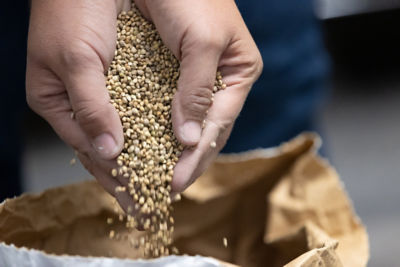Lately, many new varieties with resistance against tomato brown rugose fruit virus (ToBRFV) have been developed and commercialized by various seed companies. Most of these varieties come with claims to a certain level of resistance to ToBRFV either Intermediate resistance – IR* or High resistance -HR*. Regardless of resistance claims, it is important to be aware that resistance does not equate to immunity. Resistant plants could and may still be infected with the virus without visible symptoms. Further, if the virus is present but symptoms are not displayed, there is a risk that such resistance may be broken by the virus over time as the virus mutates. This is a particularly important consideration for ToBRFV because it is a highly mutative virus. Hence, Bayer calls for a more durable approach to ToBRFV resistance.
The important question is: “In the context of ToBRFV, how can we minimize the likelihood that the virus breaks the resistance?” or “How can we reduce the risk that this will happen?”

In general, disease resistance based on a single gene is likely to be broken more easily by the virus when compared to resistance based on multiple genes. It is also more difficult for the virus to break the resistance if the multiple genes have different resistance mechanisms. As mentioned above, ToBRFV is highly mutative, and, as a result, single gene resistance may be more likely to break than other diseases.
Before 2014 (when the ToBRFV was first detected in Jordan) the TM2² gene was identified as protecting tomato plants against Tobamovirus TMV. In 2014 the new Tobamovirus ToBRFV overcame this resistance and, as a result, varieties containing the TM2² gene became susceptible to ToBRFV. The resistance mechanism of the TM2² gene is based on a hyper-sensitivity reaction. As soon as the virus enters a cell, this cell dies, so that multiplication and movement of the virus in the plant is greatly restricted.
This resistance can be compared to a wall of 2 meters high. The virus was not able to jump over it, despite trying constantly for 20 years! Then a small mutation occurred in the virus which allowed it to jump 2.10 meters. Suddenly the resistance was broken. When a seed company finds a resistance gene that makes the wall 2.20 meters high, the virus cannot jump over it anymore and the plants are resistant again. However, if the wall has the same resistance mechanism, you can imagine that after some time the virus will mutate again and be able to jump over the 2.20-meter wall as well. When that happens, the resistance is broken again, and we will be in the same situation as we were over the past few years. How can we prevent this?
Today, the best option to prevent this from happening is to stack multiple genes with various resistance mechanisms. To continue with the same example, as well as making the wall higher, we could dig a canal before the wall. The virus needs to mutate not only for jumping, but also for swimming. And if possible, add another mechanism, like an electric fence. With multiple different resistance mechanisms, it becomes increasingly unlikely that overall resistance is broken.
The good news is that it is highly probable that resistance genes with various resistance mechanisms are available to breeders. However, the drawback is that it will take time to build all these genes into parental lines and hybrids without affecting the agronomic behavior of the hybrids. Bayer is currently working on both its De Ruiter™ and Seminis™ tomato portfolio. Effectively, we are working on making the wall higher and building in other different resistance mechanisms. For example, our ToBRFV intermediate resistance* varieties, Ferreira and Novero have multiple resistance genes built in.
Taking action against ToBRFV
Tomato brown rugose fruit virus (ToBRFV) is a viral disease impacting tomato plants that is spreading rapidly around the world. At Vegetables by Bayer, our industry-leading R&D team is working to provide long-lasting, science-based solutions. Learn more and get the latest news and information on ToBRFV from on how you can help prevent the spread of ToBRFV.




